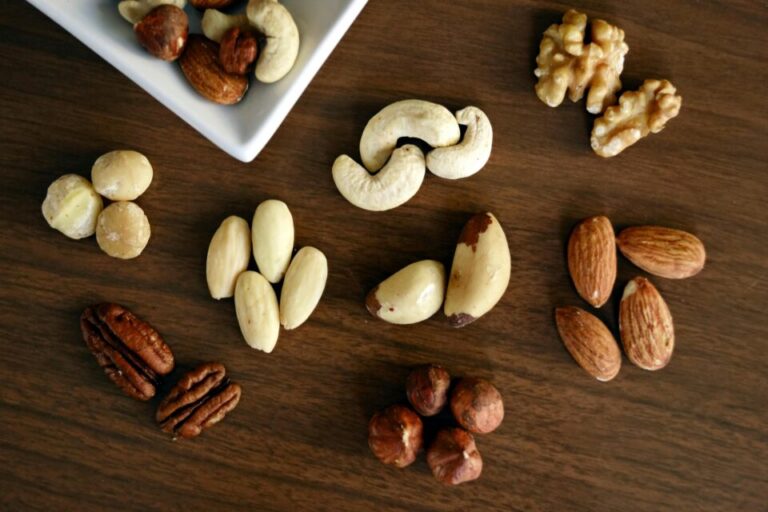Nuts are a broad and nutritionally dense food group with several varieties to choose from, each with its own set of nutritional benefits.
There are numerous types of nuts that add texture, crunch, and taste to many of our favorite pastries, pastas, salads, pestos and even fish, chicken and meat dishes.
When mixed with honey, sugar, maple syrup, or chocolate, these savory nuggets become sweet while preserving their bite and foundation characteristics. Their modest stature belies their value as an ingredient; they’re a force to be reckoned with!
Peanuts, almonds, pecans, and walnuts are the most popular nut kinds in the United States, particularly in sweeter dishes.
However, nuts have inherent health benefits: While they do contain some fat, with almonds on the lower side (15 grams per ounce, dry-roasted and unsalted) and macadamia nuts on the higher side (21 grams per ounce, dry-roasted and unsalted), they also contain good monounsaturated fats and omega-3s for heart health, as well as fiber and vitamin E, which is especially important for vegetarians and vegans.
Furthermore, the expansion of commercially available nut-based goods such as almond and cashew butters, as well as nut flours and meals produced from almonds, pecans and hazelnuts, benefits those with a wide range of tastes as well as those with dietary and medical difficulties.
This site gives a comprehensive overview of all types of nuts, including both common and lesser-known options.
We’ll look at the types of nuts, their features and nutritional information.
Types of Nuts
1. Acorns
Some people may be surprised to learn that acorns can be tasty and healthy. Acorns have long been used as a food source and were once a mainstay in many parts of the world.
Interestingly, historical records reveal that acorns played an important role in human diets as early as 6000 BC.
However, acorns require special preparation processes, particularly leaching, to remove their naturally high tannin content.
Acorns’ popularity as a food source has declined in recent years, possibly due to the lengthy preparation process.
Nonetheless, they remain popular in some cuisines. For example, acorn jelly and acorn noodles are popular in Korean cuisine.
2. Almonds
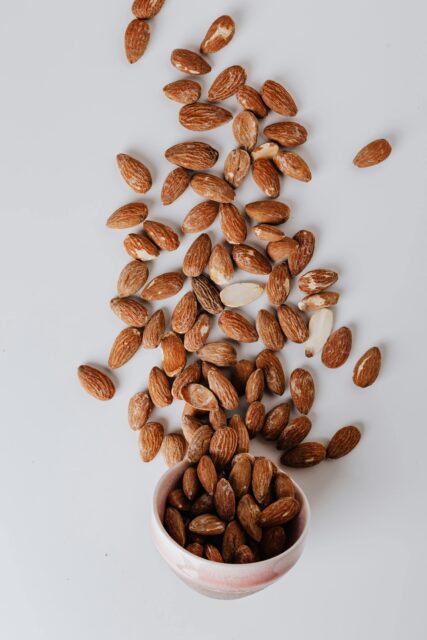
Almonds are tree nuts with Middle Eastern roots and a millennia-long history. Aside from their popularity as whole nuts, almonds are a vital ingredient in a variety of food products. Some popular alternatives include almond flour and almond milk.
3. Baru Nuts
Baru nuts, while relatively unknown, have gained appeal in recent years. Baru nuts, like other items often referred to as “nuts,” are not actually tree nuts. Instead, they are classified as legumes, similar to peanuts.
These nuts, which are mostly grown in Brazil, have numerous nutritional benefits, as well as a visually appealing look and a great taste.
4. Black Walnuts
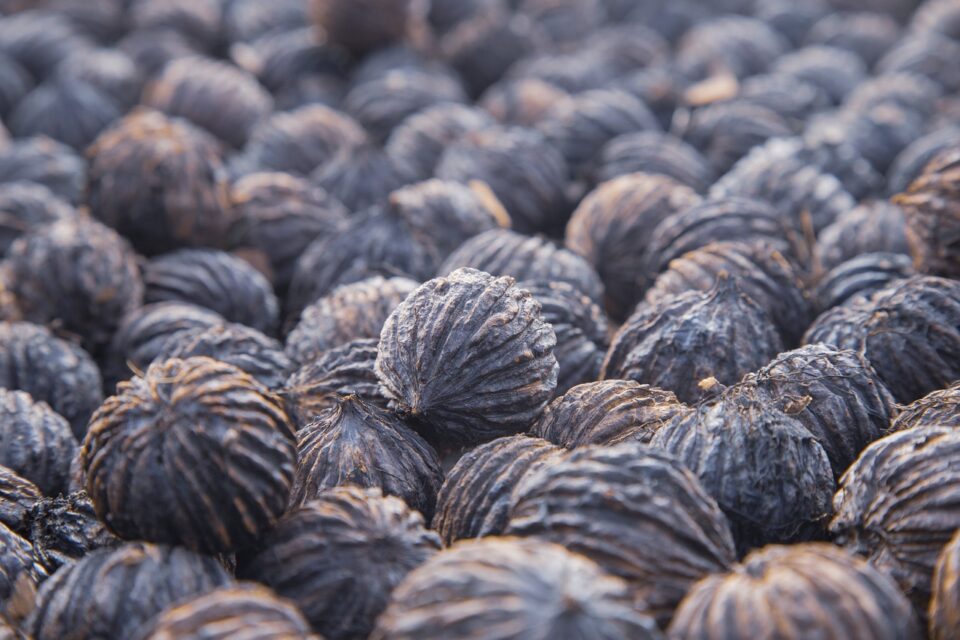
While many of us are familiar with the term ‘walnut,’ it’s important to note that this nut comes in two varieties. The first is the English walnut, sometimes known as ‘Juglans regia’. The second variety is the black walnut, scientifically known as ‘Juglans nigra’.
Nutritionally, both forms of walnuts provide equivalent benefits. However, English walnuts have a softer and more pleasing flavor, making them more widely available. As a result, the bulk of walnut products have English walnuts as the main ingredient.
5. Brazil Nuts
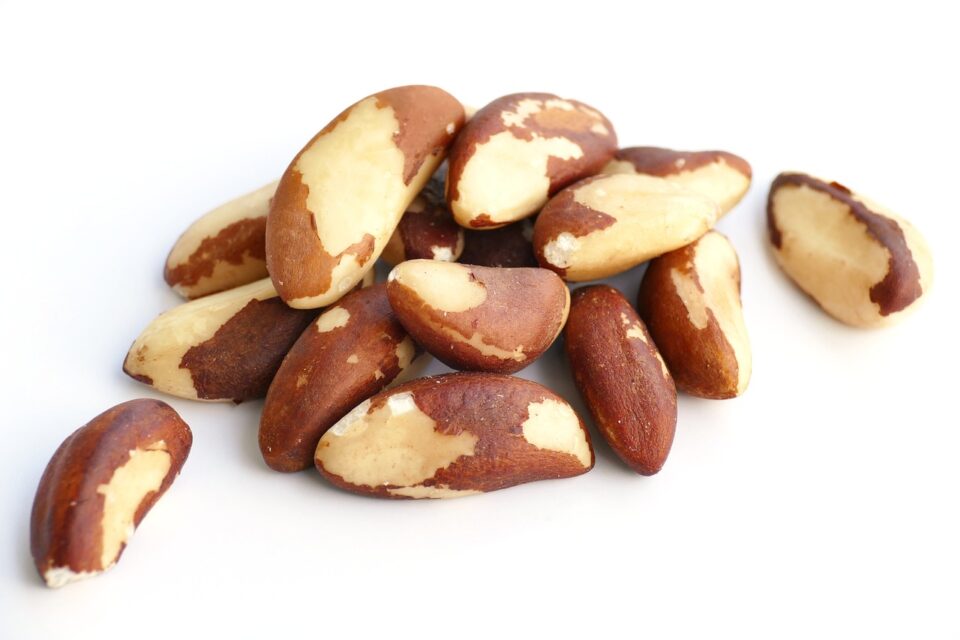
Brazil nuts grow in the enormous Amazon jungle of South America. True to their name, these nuts are especially popular in Brazil and surrounding nations such as Bolivia, Colombia, and Venezuela.
These nuts grow on the remarkable Bertholletia excelsa, sometimes known as the Brazil nut tree, which may reach heights of hundreds of meters.
Brazil nuts are the largest nut kind and have a distinctive nutritional profile: they contain more dietary selenium than any other food.
6. Cashewnuts
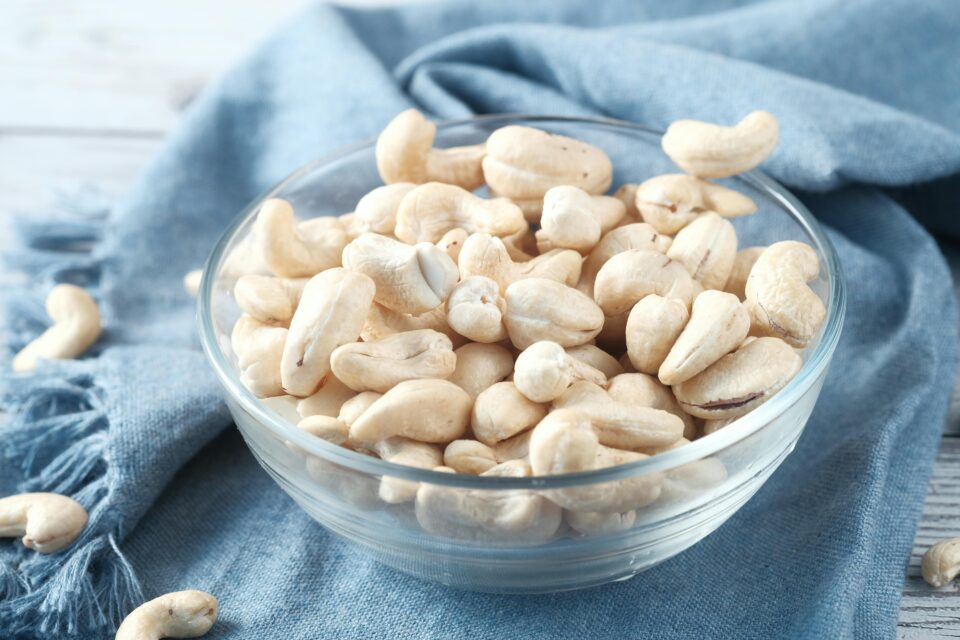
Cashews, a true tree nut, are predominantly produced in Asia and Africa, with Vietnam and India being the leading exporters.
Compared to other nuts, cashews have a higher concentration of carbohydrates and a somewhat lower fat content.
7. chestnuts
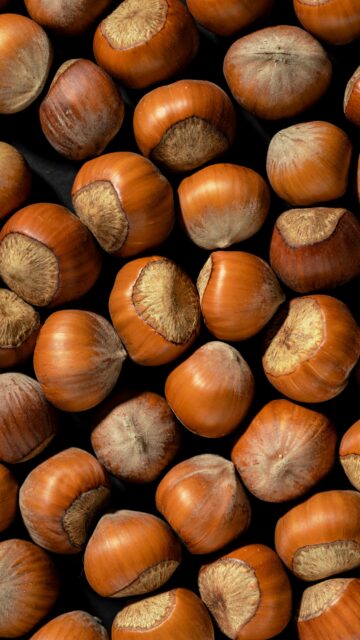
Chestnuts are distinguished from other types of nuts by their high concentration of starchy carbs.
Five countries dominate global chestnut production: China, Bolivia, Turkey, South Korea, and Italy. These wonderful nuts are frequently available for purchase during the winter, especially when freshly roasted.
8. Gabon Nuts
Gabon nuts come from the Coula edulis tree, which is native to Western Africa. These nuts contain around 50% fat by weight, mostly in the form of the monounsaturated fatty acid oleic acid.
Gabon nuts are frequently mistaken for hazelnuts because of their mild and nutty flavor, although they have their own distinct flavor.
Gabon nuts, often known as African walnuts, are less commercially available than other well-known nut types, such as almonds and peanuts. However, you may come across them in niche stores or internet markets.
Unfortunately, there is currently no trustworthy nutritional information available for Gabon nuts.
9. Hazelnuts
Turkey is currently the world’s largest producer of hazelnuts, accounting for more than two-thirds of the total.
Hazelnuts, as one of the most popular nut kinds, are used in a variety of tasty food products.
Hazelnuts are a popular nut for its culinary applications, particularly when paired with chocolate and coffee.
10. Hickory Nuts
Hickory nuts grow on a variety of Hickory tree species and share similarities with pecans. Hickory nuts are less commonly found in stores than other varieties of nuts. Because they are more difficult to find in supermarkets, some people love foraging for them.
11. Macadamias

Macadamia nuts originated in Australia, where they are also widely produced commercially. However, South Africa dominates global production, accounting for an astounding 70,139 tons of macadamia nuts in 2022.
Macadamia nuts are a popular choice due to their excellent buttery flavor and high fat content. On the downside, they can be rather expensive. Furthermore, compared with other nuts, they may contain fewer levels of vitamins and minerals.
12. Marcona Almonds
Marcona almonds, often known as sweet almonds,’ are native to Spain and possess unique features. Marcona almonds differ from conventional almonds in that they are larger in size, contain more fat, and have a buttery quality.
As depicted in the image above, Marcona almonds resemble a cross between normal almonds and macadamia nuts.
13. Peanuts
Though technically classified as a legume, peanuts are among the most popular varieties of ‘nuts.’ Peanut butter is one of their most well-known applications, as well as the most popular among the various nut butters.
Peanuts are always popular with consumers, whether salted, dry-roasted, or made into peanut butter. Their tremendous popularity is reflected in global production, which averages 45 million tons per year. Interestingly, China produces more than twice as many peanuts as any other country.
Despite being a legume botanically, peanuts have many of the same nutritional properties as true tree nuts, including a high fat content.
14. pecans

Pecans are well-known for their flexibility in baking, but they are also prized for their unique flavor.
The United States leads the world in pecan production, producing more than 250 million pounds of these nuts each year.
Tips for Buying and Cooking with Nuts
Here are a few pointers that will help you no matter what kind of nuts you are using.
Nuts can be expensive; save money by purchasing in bulk. To keep nuts from getting rancid, store them in airtight containers in the freezer.
Unless you’re baking with nuts, roast them beforehand. Spread the nuts in a single layer on a baking sheet and roast in a preheated oven at 275°F for about 10 to 12 minutes.
Alternatively, you can use a skillet. Roast the nuts over medium-low heat, stirring the pan occasionally, until golden brown, about 5 minutes.
Both strategies necessitate a keen eye: In just a few seconds, the nuts can transform from a gorgeous golden brown to an unpleasant, charred mess.
Frequently Asked Questions
Are nuts good sources of protein?
Nuts can be a good source of protein, but this varies depending on the nut. While some nuts, such as almonds and peanuts, have a reasonable amount of protein, others, such as acorns, chestnuts, macadamia nuts, and tiger nuts, contain less.
It’s also worth mentioning that nuts provide less protein per calorie than protein-rich choices such as meat, fish, beans, lentils, tofu, milk, and cheese.
Are nuts entire foods?
Nuts are considered entire foods. Nut products, such as almond flour and peanut butter, are processed foods.
However, it is crucial to emphasize that not all ‘processed’ meals are inherently harmful; many can be excellent sources of nutrients.

